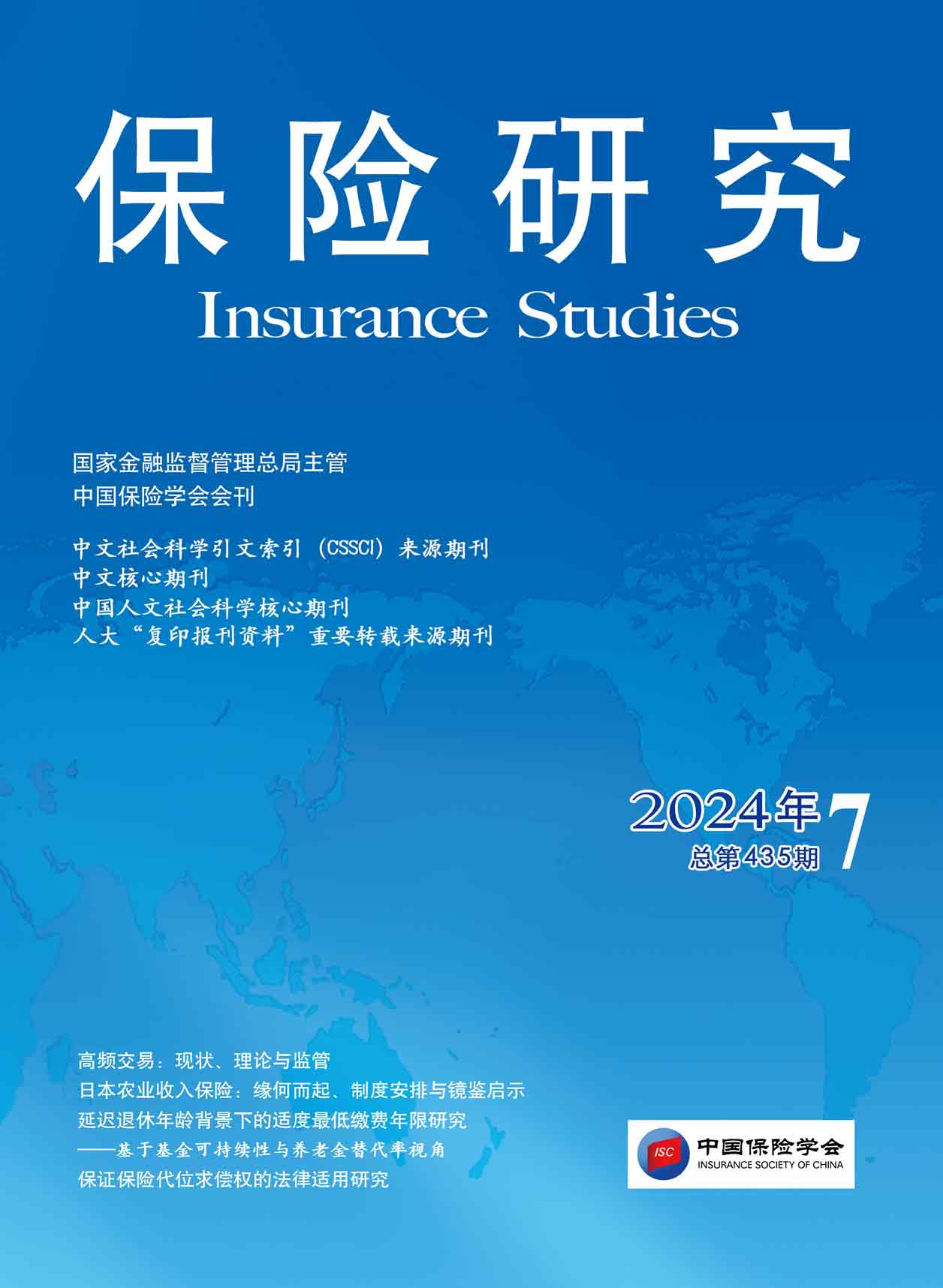
《保险研究》20240702-《气候变化对保险业的风险冲击效应:理论分析与实证检验》(李子晗、李红坤)
[中图分类号]F842[文献标识码]A[文章编号]1004-3306(2024)07-0018-18 DOI:10.13497/j.cnki.is.2024.07.002
资源价格:30积分
- 内容介绍
[摘 要]保险业在应对气候变化中发挥了重要作用,但亦是受影响最直接的金融部门,在气候变化及其导致的极端气候事件频率加剧背景下,保险业面对的风险加剧。本文设计了一个反映保险业风险状况的气候变化风险指标体系,基于全球2012~2022年73个国家或地区1460家保险公司样本数据,检验气候变化对保险业的影响。分析结果显示,气候变化对保险业的风险冲击效应显著且具有时滞性、但时滞较短。异质性检验发现,气候变化短期内会更大程度引起保险业发展高水平组国家风险积累;对不同气候变化程度冲击组的检验显示,影响无明显异质性;对不同业务类型保险公司的检验显示,短期内财产保险公司较人身保险公司受气候变化影响更大。机制分析表明,对产险公司来说,气候变化提升了其综合成本率,对人身险公司来说,气候变化使其利差减少甚至为负,加剧了行业面临的风险冲击。
[关键词]气候变化;保险业;物理风险;转型风险;责任风险
[基金项目]本文感谢国家社会科学基金项目(19BZZ095)、山东省金融学会重点研究课题(2024SDJR31)资助。
[作者简介]李子晗,济南历下控股集团有限公司经济师、审计师,英国利兹大学理学硕士,研究方向:气候经济、保险理论、地方政府债务;李红坤,经济学博士,应用经济学博士后、数学博士后,山东财经大学金融学院教授,研究方向:风险管理、金融监管。
The Theoretical Analysis and Empirical Testing of the Risk Impact of Climate Change on the Insurance Industry
LI Zi-han,LI Hong-kun
Abstract:The first financial sector to intervene in the fight against climate change is the insurance industry.The insurance industry plays an important role in addressing climate change,but it is also the financial sector most affected by climate change.In the face of climate change and the high efficiency of extreme climate events it causes,the insurance industry has become a “high-risk industry.” Based on the sample data of 1,460 insurance companies in 73 countries or regions around the world from 2012 to 2022,this article designs a climate change risk indicator system containing 5 items that can reflect the risk status of the insurance industry from different aspects to more accurately measure the climate financial risk level of the insurance industry.The analysis results show that the risk impact of climate change on the insurance industry is universal,systematic,time-lagging and short-term.The heterogeneity test shows that the five risk indicators of both countries with high level of insurance development and countries with low level of insurance development are significantly affected by climate change,but climate change will cause risk accumulation in countries with high level of insurance development to a greater extent in the short term.The results of the two groups with different degrees of climate change show no obvious heterogeneity.The heterogeneity test results of insurance companies with different business types show that property insurance companies are more affected by climate change than life insurance companies in the short term.Through mechanism analysis using interest rate spreads as intermediary variables,the test results show that climate change causes interest rate spreads to fluctuate and intensified risks by impacting the asset and liability sides of the insurance industry.The above research can provide new theoretical supports for the insurance industry to further improve the strategic framework for addressing climate change.
Key words:climate change;insurance industry;physical risk;transition risk;liability risk
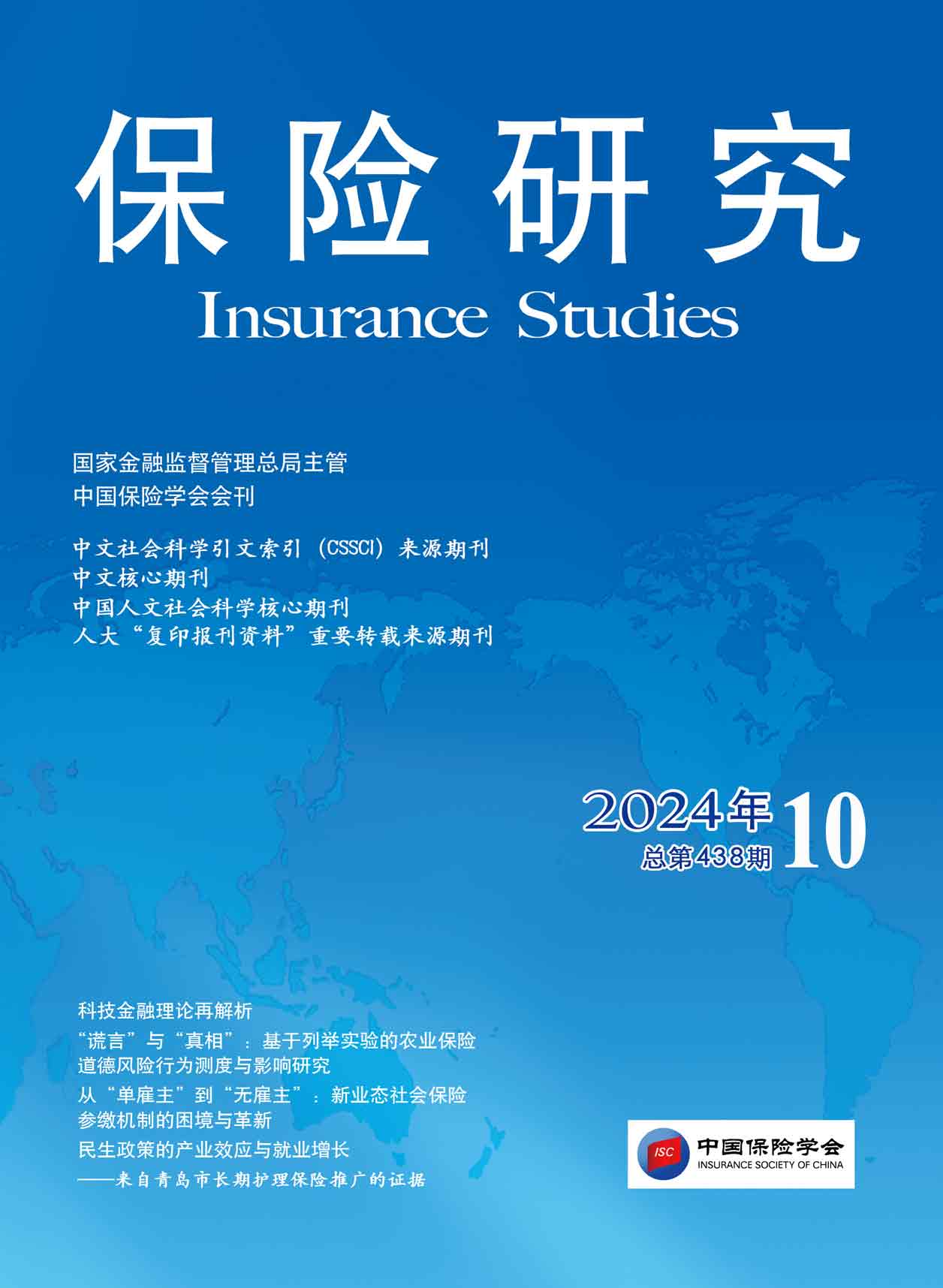
《保险研究》20241001-《科技金融理论再解析》(张明喜)

《保险研究》20241002-《重大慢性病与中国老年家庭财产消耗——兼论保险的调节效应》(刘靖、张晓慧、毛学峰)
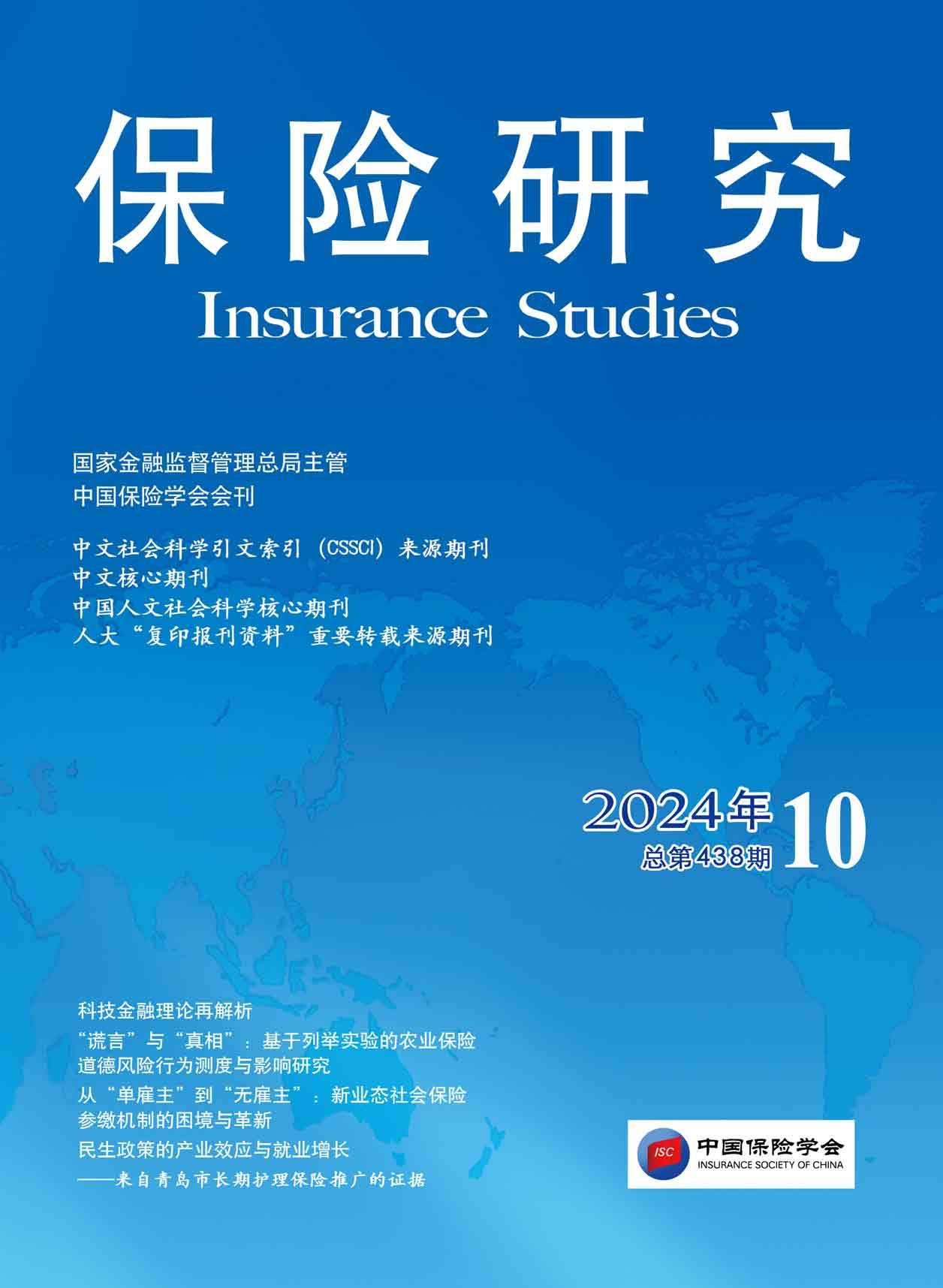
《保险研究》20241003-《监管问询函是否影响保险定价决策?——基于董事高管责任保险合约的经验证据》(徐一泽、李延胤、许荣)
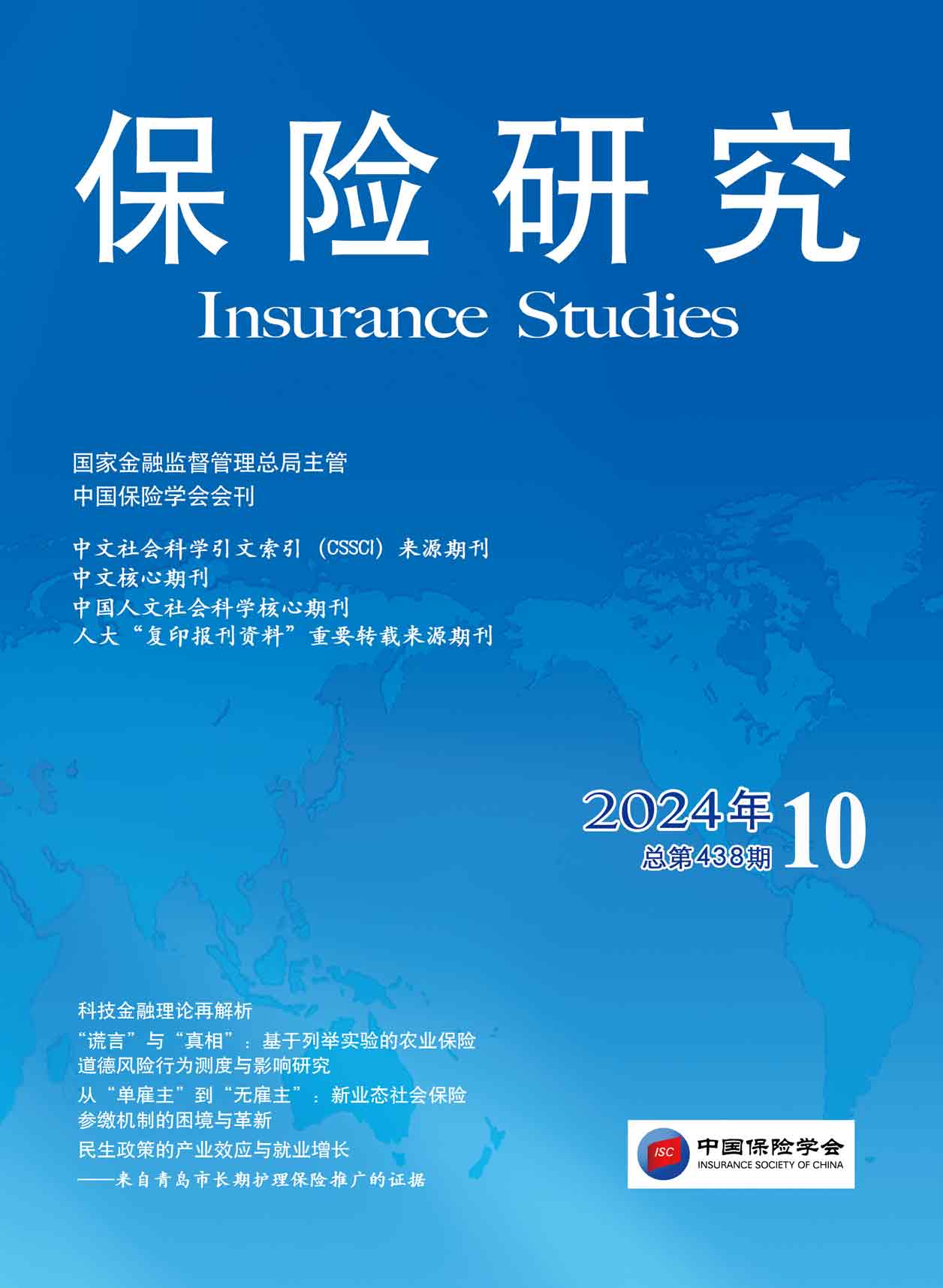
《保险研究》20241004-《增额终身寿险内嵌退保期权风险研究》(周书正、刘迪)

《保险研究》20241005-《基于两阶段分位数随机森林的非完全支付赔款预测》(李政宵、刘钰冰)
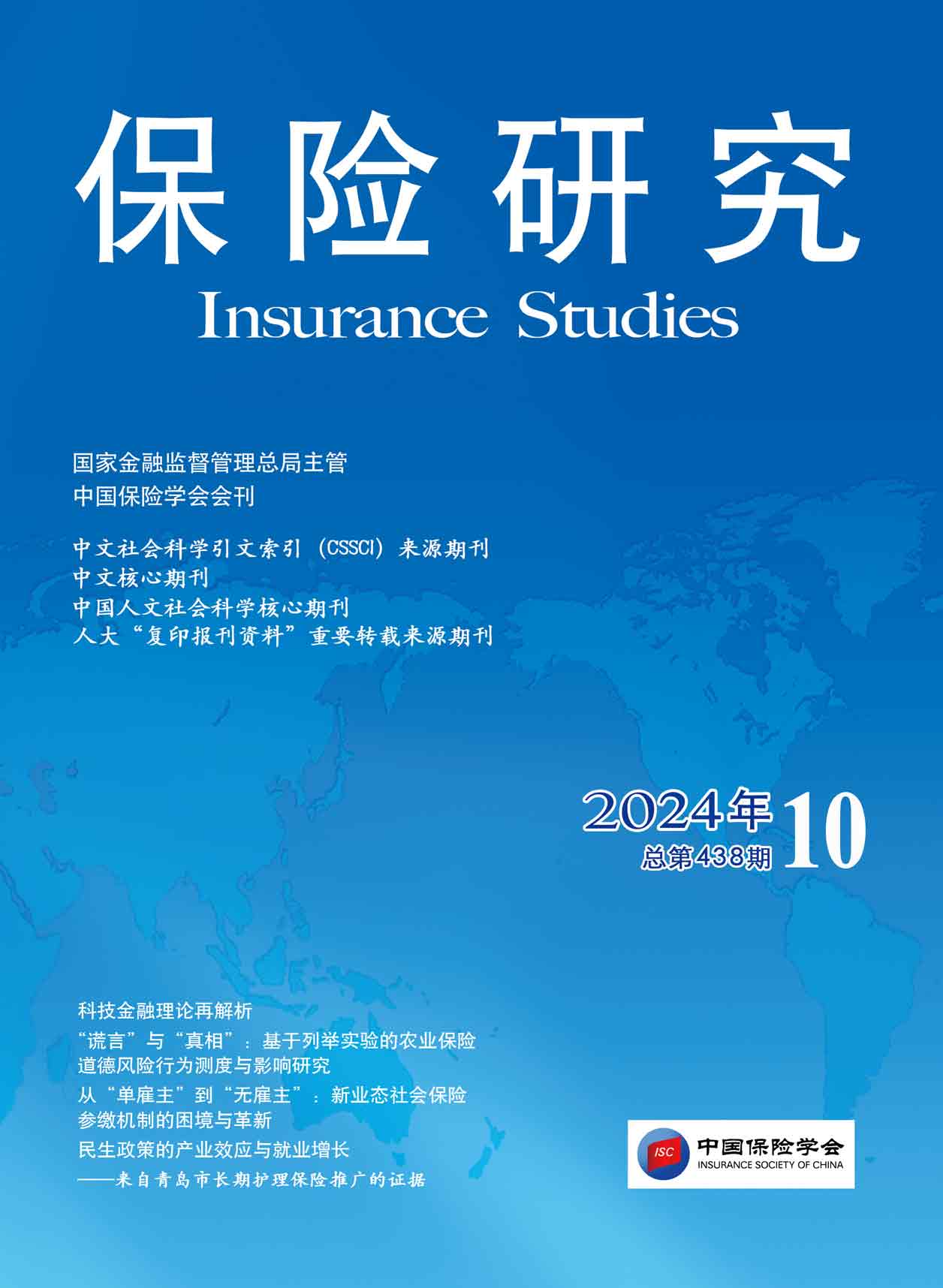
《保险研究》20241006-《“谎言”与“真相”:基于列举实验的农业保险道德风险行为测度与影响研究》(易福金、许晴、燕菲儿、胡鸣宇)
